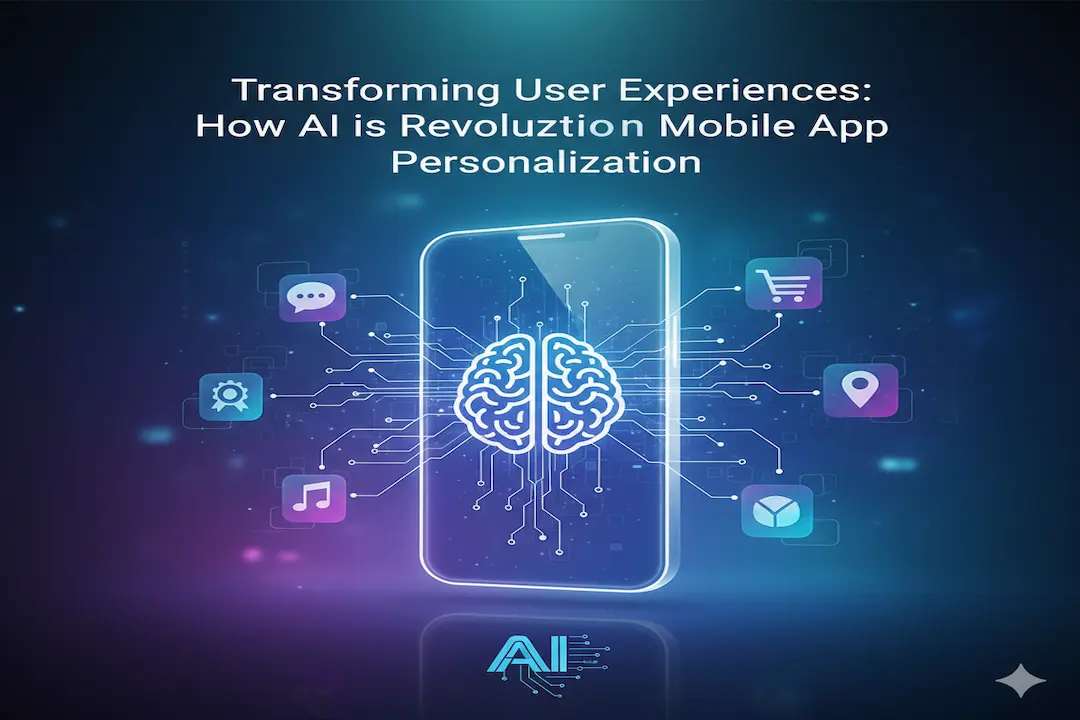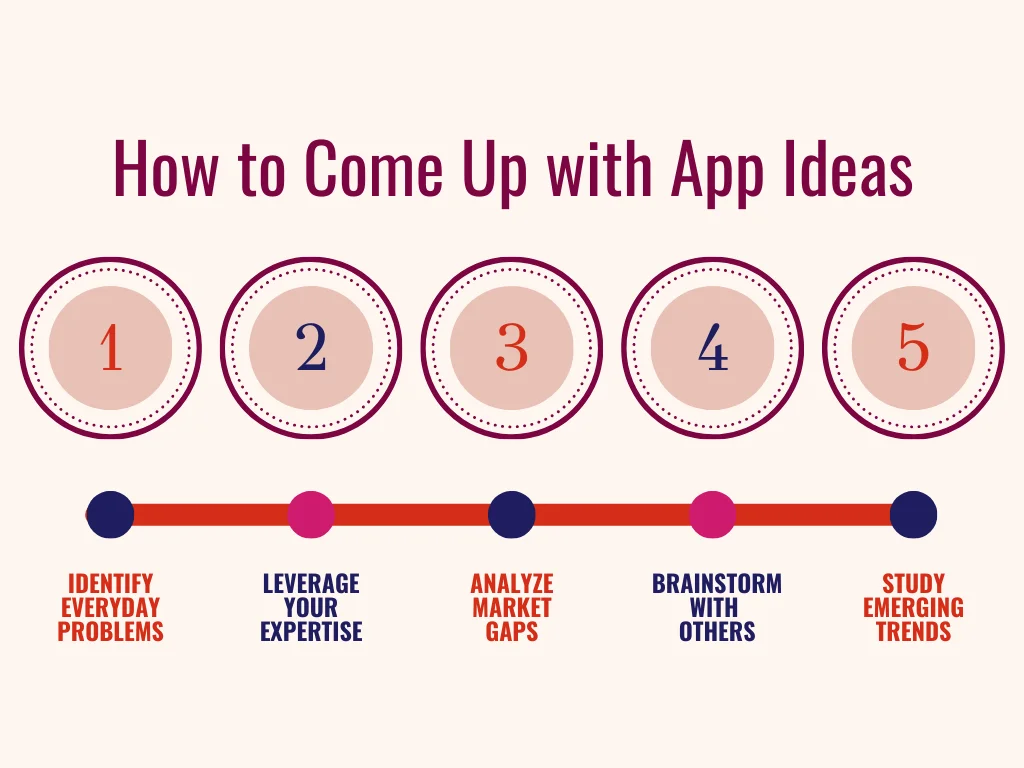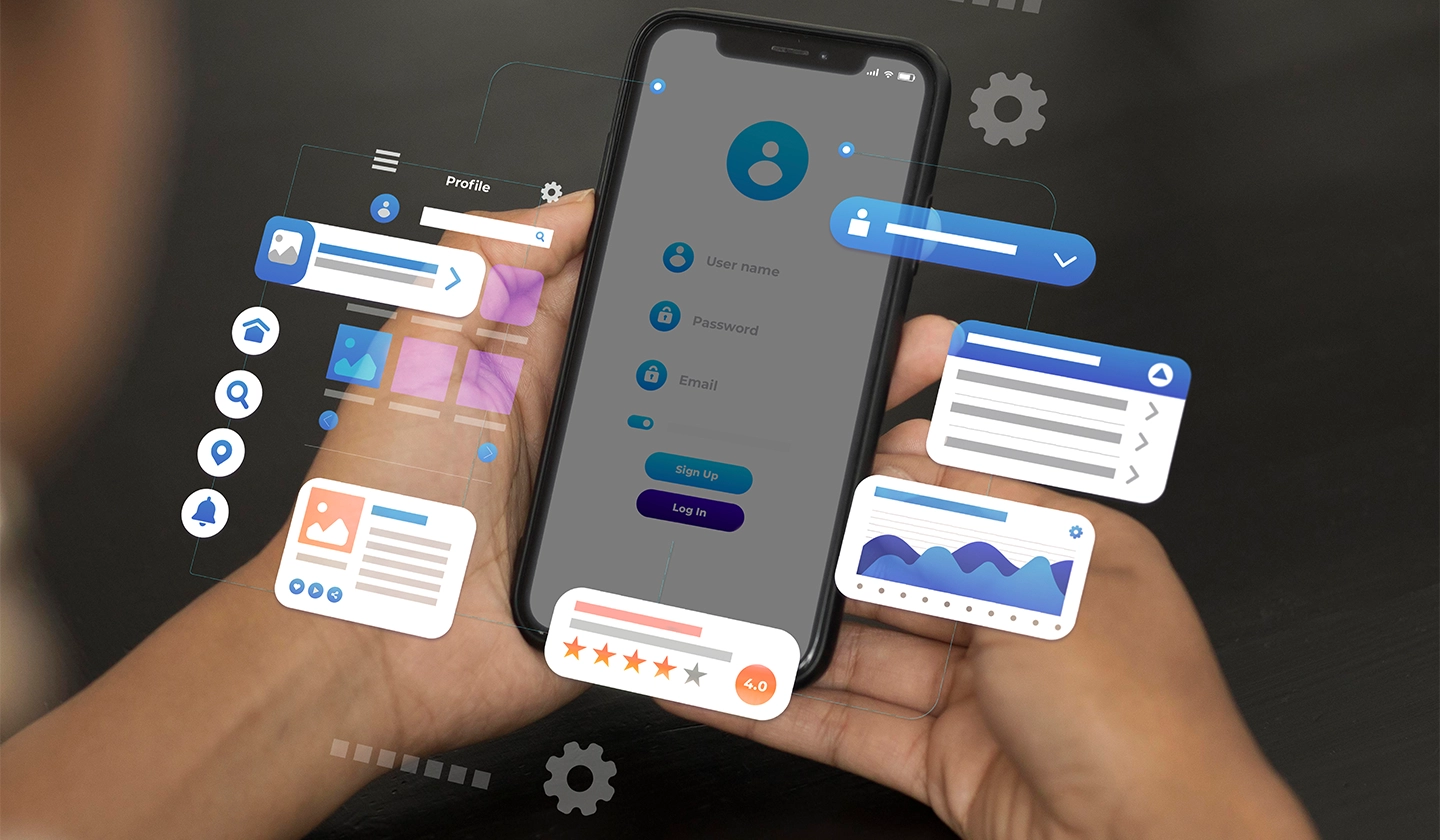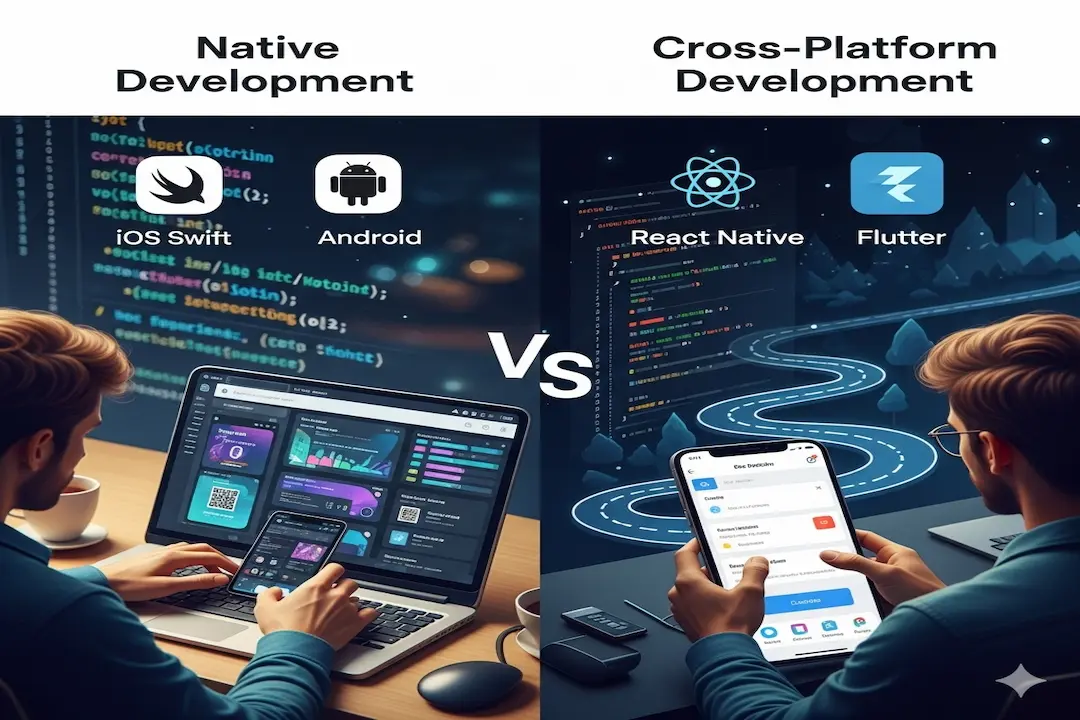
In our hyper-connected era, your mobile phone is far more than a mere device; it serves as a personalized gateway to information, entertainment, and crucial services. Mobile applications have become utterly indispensable, spanning everything from grocery orders to intricate business operations. Yet, with millions of apps competing for attention, how can you ensure yours truly distinguishes itself, captivates users, and fosters loyalty? The solution lies in personalization, and increasingly, Artificial Intelligence (AI) acts as the catalyst for genuinely transformative user experiences.
For small business owners within the tech sector, marketing professionals between 25-45, and enterprise IT decision-makers, grasping the strategic might of AI in mobile app personalization isn’t merely an asset, it’s a fundamental requirement. This extends beyond a user’s name appearing; it involves foreseeing needs, anticipating desires, and designing an intuitive journey that feels uniquely tailored. This detailed exploration will reveal how AI transcends being just a buzzword, emerging as a practical, potent instrument redefining our interactions with mobile applications, providing a decisive advantage in a saturated digital realm.
Table of Contents
Understanding AI in Mobile App Personalization
Prior to exploring the ‘how,’ we’ll define the ‘what’ and ‘why’ of mobile app personalization and the crucial role AI fulfills.
What is Mobile App Personalization?
Mobile app personalization involves customizing an application’s content, features, and user interface for individual users or specific segments, driven by their distinct traits, actions, and tastes. It shifts from a universal, generic strategy to a custom-made, individual encounter.
Why is this personalization so vital? User attention is an invaluable asset. Impersonal experiences frequently result in indifference, detachment, and eventually, user churn. A personalized experience, conversely, can yield:
- Increased Engagement: More pertinent apps encourage users to spend greater time within them.
- Higher Conversion Rates: Custom-made suggestions directly prompt purchases or desired activities.
- Improved Retention: Users remain loyal to applications that consistently fulfill their requirements.
- Enhanced Customer Satisfaction: A smooth, intuitive, and pertinent experience cultivates strong loyalty.
Picture a banking app: rather than a standard dashboard, a user could instantly view their most used accounts, a pending bill alert, or a personalized financial tip. This represents intelligent design, significantly boosting the app’s worth.
The Role of AI in Personalization
While basic segmentation (e.g., age, location) might characterize traditional personalization, AI dramatically enhances this. Artificial Intelligence, which includes machine learning (ML), natural language processing (NLP), and deep learning, empowers applications to comprehend, interpret, and swiftly adjust to user behavior in real-time, at scale, and with remarkable exactitude.
Typically, AI technology analyzes user behavior within mobile applications as follows:
- Data Collection: AI systems consume immense user data: in-app activities (taps, swipes, searches), demographics (age, gender, location), device specifics, contextual information (time, weather), and historical interactions (purchase records).
- Pattern Recognition: AI algorithms detect complex patterns and underlying connections, uncovering subtle inclinations, forecasting subsequent actions, and clustering users into responsive micro-segments.
- Predictive Analytics: Drawing from identified patterns, AI anticipates a user’s likely next need. For example, if a user seeks productivity tools, the AI could suggest novel task management applications.
- Real-time Adaptation: AI-powered systems perform immediate adjustments. Should a user’s behavior change (e.g., exploring travel options), the app can instantly modify content, suggestions, and even UI components.
How AI facilitates instantaneous adjustments to user experiences:
- Dynamic Content Delivery: Presenting specific articles, products, or features aligned with real-time browsing.
- Personalized Notifications: Dispatching opportune, pertinent push notifications based on location, usage, or occurrences.
- Adaptive UI/UX: Modifying layout, element sequencing, or color schemes to optimize for individual tastes.
- Smart Search and Recommendations: Delivering highly precise search outcomes and evolving product/content suggestions.
This refined, data-centric methodology crafts mobile experiences that are not only personalized but also proactively adaptive, genuinely making users feel recognized.
Key Insights from AI-Driven Personalization
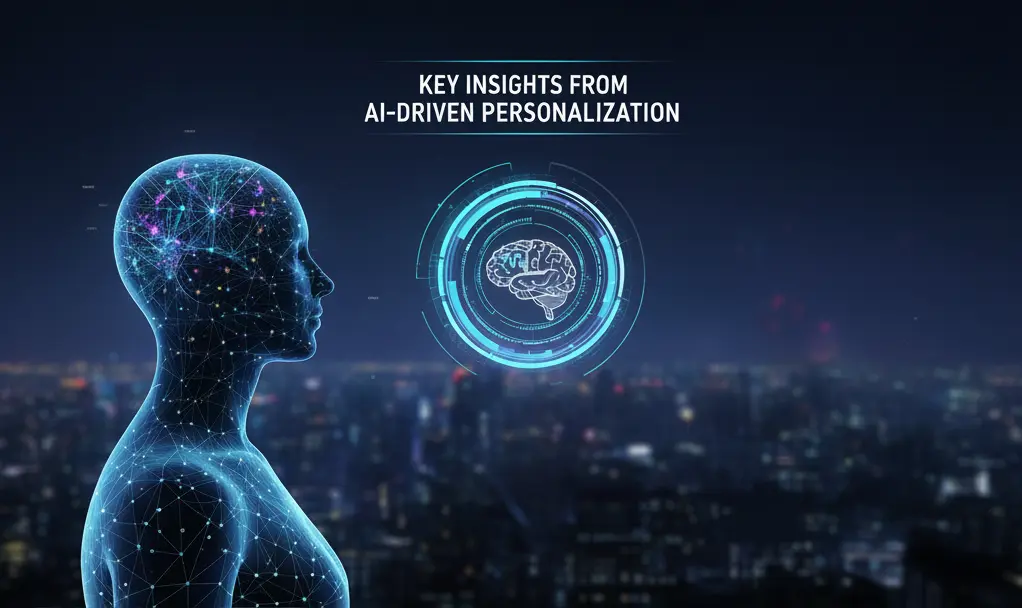
AI’s influence on mobile app personalization moves past mere surface-level alterations, bringing concrete advantages that reshape user interaction and business results.
Real-Time, Tailored Experiences
Picture an e-commerce application that, sensing your recent smartphone purchase, immediately proposes fitting accessories. Or a news app grasping your shifting interests, displaying breaking stories on recently explored subjects. Such is the potency of real-time, customized experiences, all made possible by AI.
Example: Predictive analytics and dynamic content adaptation
- Streaming Services (e.g., Netflix, Spotify): AI examines viewing/listening history, ratings, time, and subtle interactions to forecast your next enjoyment. It suggests fresh content you might otherwise miss, continuously adjusting as tastes change, thereby extending watch time and lowering churn.
- Retail Apps: When browsing winter coats, AI can promptly recommend complementary scarves or boots in your size. Should you abandon a shopping cart, AI can activate a tailored discount or reminder.
Statistics on user engagement through AI personalization:
- Roughly 70-80% of consumers anticipate personalized experiences.
- Businesses employing AI for personalization frequently observe a 10-30% boost in customer lifetime value (CLTV).
- Personalized calls to action (CTAs) outperform generic ones by over 200%.
- Apps featuring robust personalization can achieve up to a 5x rise in user retention.
These statistics underscore tangible revenue and loyalty benefits for companies investing in AI-powered personalization.
Moving Beyond Traditional Approaches
In the past, personalization depended on wide segmentation or fixed rules, placing users into sizable categories. Although better than nothing, this approach faced considerable drawbacks.
Comparison of Traditional vs. AI-Driven Personalization Strategies:
| Feature | Traditional Personalization | AI-Driven Personalization |
|---|---|---|
| Data Usage | Limited, static user profiles | Vast, real-time behavioral data, contextual information |
| Adaptability | Slow, rule-based, manual updates | Dynamic, real-time, automatic adaptation |
| Granularity | Broad user segments | Individual user profiles, micro-segments |
| Prediction | Basic assumptions, historical trends | Sophisticated predictive analytics, intent recognition |
| Scalability | Challenging with increasing complexity | Highly scalable across millions of users and data points |
| Optimization | A/B testing, manual adjustments | Continuous learning, self-optimization |
| User Experience | Often feels generic or slightly off-target | Highly relevant, intuitive, proactive |
Table 1: Traditional vs. AI-Driven Personalization
List of benefits of using AI for mobile apps in terms of personalization:
- Hyper-Personalization at Scale: Delivering distinct experiences to millions, which is impossible through manual efforts.
- Predictive Capabilities: Foreseeing user needs prior to explicit declarations, thereby fostering proactive interaction.
- Enhanced User Retention: Cultivating a profoundly satisfying experience that promotes extended app usage.
- Optimized Marketing ROI: Guaranteeing that communications, deals, and content reach the ideal individual precisely when needed.
- Improved User Onboarding: Crafting customized pathways for new users, swiftly showcasing value and lowering abandonment rates.
- Dynamic Content & UI: Automatically modifying app components to align with unique preferences and requirements.
Real-World Applications of AI in Mobile Apps
Theory is one aspect; practical application is distinct. We’ll now examine how prominent companies leverage AI.
Case Study: Duolingo
Duolingo, the well-known language-learning application, showcases AI-powered personalization. AI forms the core of its goal for efficient, approachable language acquisition.
Overview of Duolingo’s AI strategies:
- Personalized Learning Paths: AI assesses user performance (difficult words, grammatical mistakes, learning speed) to dynamically tailor lesson complexity, revisit tough ideas, and introduce new content optimally.
- Spaced Repetition Systems (SRS): AI fine-tunes review schedules, re-presenting concepts precisely before a user might forget them, thereby maximizing recall.
- Gamification & Motivation: Smart feedback and incentive structures, shaped by engagement data, maintain learner drive.
- A/B Testing at Scale: Duolingo conducts thousands of A/B tests concurrently, employing AI to evaluate outcomes and automatically deploy modifications that boost learning and involvement.
Discuss impact on Lifetime Value (LTV) and Retention Rates:
- Exceptional Retention: Engaging and effective learning cultivates robust retention. Users perceive real advancement, a potent incentive, resulting in extended subscriptions and sustained engagement.
- High Lifetime Value (LTV): Greater retention directly equates to increased LTV. Users who persist longer tend to upgrade and make recommendations more frequently.
- Massive User Base: The customized method appeals to a worldwide demographic with varied learning preferences, scaling to hundreds of millions of users.
This case study demonstrates how AI integrates into the product’s very essence, delivering quantifiable business impact.
Other Successful Implementations
- Spotify: AI generates tailored daily mixes, discovery playlists, and suggests podcasts reflecting listening patterns.
- Amazon: Its application employs AI for exceptionally pertinent product suggestions and customized search outcomes, stimulating sales.
- Uber/Lyft: AI optimizes routes, forecasts demand, modifies pricing, and personalizes driver-rider pairings for streamlined service.
- Starbucks: The app utilizes AI to comprehend preferences, provide bespoke beverage recommendations, and customize promotions, boosting order regularity and faithfulness.
- TikTok: The “For You” page stands as an AI triumph, continuously adapting from interactions to present highly personalized, captivating short-form video content.
- Nike Training Club: Provides AI-driven personalized exercise regimens, modifying routines according to user advancement and objectives.
- Pinterest: Harnesses visual AI to interpret user preferences from pins, delivering pertinent visual suggestions.
These instances highlight the broad applicability of AI-powered personalization across various mobile app sectors.
Implications for Businesses
For small business owners, marketing professionals, and enterprise IT decision-makers, AI in mobile app personalization introduces pressing challenges and remarkable opportunities. Thoughtful adoption is paramount.
Staying Competitive in the Mobile App Space
The mobile app marketplace is intensely competitive. A bland user experience guarantees obsolescence.
Importance of adopting AI technologies:
- Meeting User Expectations: Contemporary users, particularly the tech-aware 25-45 demographic, anticipate personalized experiences.
- Differentiation: AI-powered personalization presents a potent method to distinguish your app, forging a singular value proposition.
- Data-Driven Decisions: AI offers unmatched insights into user behavior, facilitating well-informed choices regarding features, content, and promotional efforts.
- Future-Proofing: Proactive AI integration positions your enterprise as an innovator, readying it for upcoming technological transformations.
Challenges and considerations regarding privacy and user data:
Embracing AI brings responsibilities, especially concerning privacy and data protection.
- Data Security: Safeguarding gathered user data against potential breaches.
- Privacy Regulations: Adherence to GDPR, CCPA, and similar guidelines is crucial. Be explicit, secure consent, and empower user control.
- Ethical AI Use: Employ AI conscientiously. Steer clear of prejudiced algorithms, ensure impartiality, and convey how AI enriches experiences without intrusion.
- Transparency: Users place greater faith in applications when they grasp why personalizations occur. Transparent policies cultivate this confidence.
Businesses must invest in both AI technology and strong data governance to cultivate and sustain user trust.
Enhancing Marketing Efficiency
For marketing professionals, AI-powered personalization revolutionizes campaign conception, implementation, and refinement.
Opportunities for improved resource allocation:
- Targeted Campaigns: AI pinpoints precise user segments, enabling highly focused campaigns that deeply connect, thereby cutting superfluous ad expenditures.
- Optimized Content Creation: AI directs content strategy by discerning user engagement, ensuring resources yield valuable assets.
- Automated Personalization: Functions such as customized emails and in-app promotions can be automated by AI, liberating marketing teams for strategic endeavors.
- Predictive Lead Scoring: AI identifies high-potential users, channeling efforts to areas where impact will be most significant.
Future trends in AI and mobile marketing:
- Generative AI for Content: AI will aid in producing individualized marketing text, advertising visuals, and adaptive in-app material.
- Voice UI and Conversational AI: More organic, custom voice interactions inside mobile applications will introduce fresh UX dimensions.
- Cross-Platform Personalization: AI will enable fluid personalized experiences across various devices and platforms.
- Emotional AI and Sentiment Analysis: Advanced AI will assess user sentiment, permitting applications to modify interactions based on mood for empathetic customization.
- Hyper-Contextual Marketing: Utilizing real-time data (location, weather, events) for exceptionally pertinent promotions precisely when and where they are effective.
Table 2: AI in Mobile Marketing: Current Applications and Future Trends
| Application Area | Current AI Use | Future AI Trends |
|---|---|---|
| User Segmentation | Behavioral analysis, demographic grouping | Micro-segmentation, dynamic real-time persona creation |
| Content Delivery | Personalized recommendations, dynamic UI | Generative AI content, adaptive multi-modal delivery |
| Campaign Optimization | A/B testing, predictive lead scoring | Autonomous campaign management, sentiment-driven adjustments |
| Customer Service | Chatbots, FAQ automation | Empathetic AI, proactive problem resolution via conversational AI |
| Ad Targeting | Lookalike audiences, retargeting | Predictive intent, hyper-contextual targeting, privacy-preserving AI |
Conclusion
We’ve examined the transformative capabilities of AI in mobile app personalization, covering everything from its core definitions to its practical real-world effects. AI is no longer a concept of the future; it stands as a current-day essential for businesses aspiring to flourish within the mobile-first economy. For small business owners, marketing professionals, and IT decision-makers, adopting AI represents the route to forging profound connections and solidifying market dominance.
The challenges are considerable, yet the benefits are even greater. By harnessing AI to comprehend, anticipate, and adjust to individual user requirements, your mobile app can become an indispensable ally. The objective is to craft experiences so fluid, instinctive, and uniquely customized that users genuinely cannot envision their lives without them.
Ready to turn AI-driven personalization into your competitive advantage? Let Webologists help you build mobile apps that adapt to each user practically on autopilot. Book a free 30-minute discovery call with us today and let’s explore how we can integrate AI at the heart of your app and rapidly elevate user engagement and retention.
FAQs
-
What is Product-Market Fit (PMF) and why is it crucial for AI startups?
PMF is the ideal state where your product effectively satisfies a significant market demand, creating a foundation for sustained growth. For AI startups, achieving PMF isn’t optional; it’s vital for survival, ensuring your innovative solution truly connects with user needs and avoids high churn.
-
How does AI itself accelerate the process of achieving Product-Market Fit?
AI significantly speeds up PMF by enabling rapid product iteration and pinpointing user needs with data-backed insights. It leverages automated data analysis, predictive analytics for feature prioritization, and real-time A/B testing to quickly adapt and optimize AI products for the market.
-
What are the dangers for founders who misinterpret early positive traction as true PMF?
Misinterpreting early traction from niche users or enthusiasts can lead to overconfidence and a false sense of PMF. This optimism bias risks wasting resources, delaying crucial strategic shifts, and ultimately imperiling the startup’s future due to a lack of genuine, scalable market demand.
-
How should AI founders effectively measure Product-Market Fit for their unique products?
AI founders should track metrics beyond basic engagement, focusing on AI feature adoption rate, the accuracy and relevance of AI outputs, and the time-to-value users gain from AI. It’s crucial to also assess user disappointment if AI features were removed and the efficiency gains provided by the AI system.
-
Should AI founders view Product-Market Fit as a fixed destination or an evolving process?
PMF is a continuous spectrum, not a one-time achievement. AI founders must constantly evaluate and adapt their products due to dynamic markets, evolving user expectations, and rapid technological advancements, ensuring their AI solutions remain relevant, valuable, and competitive over time.


